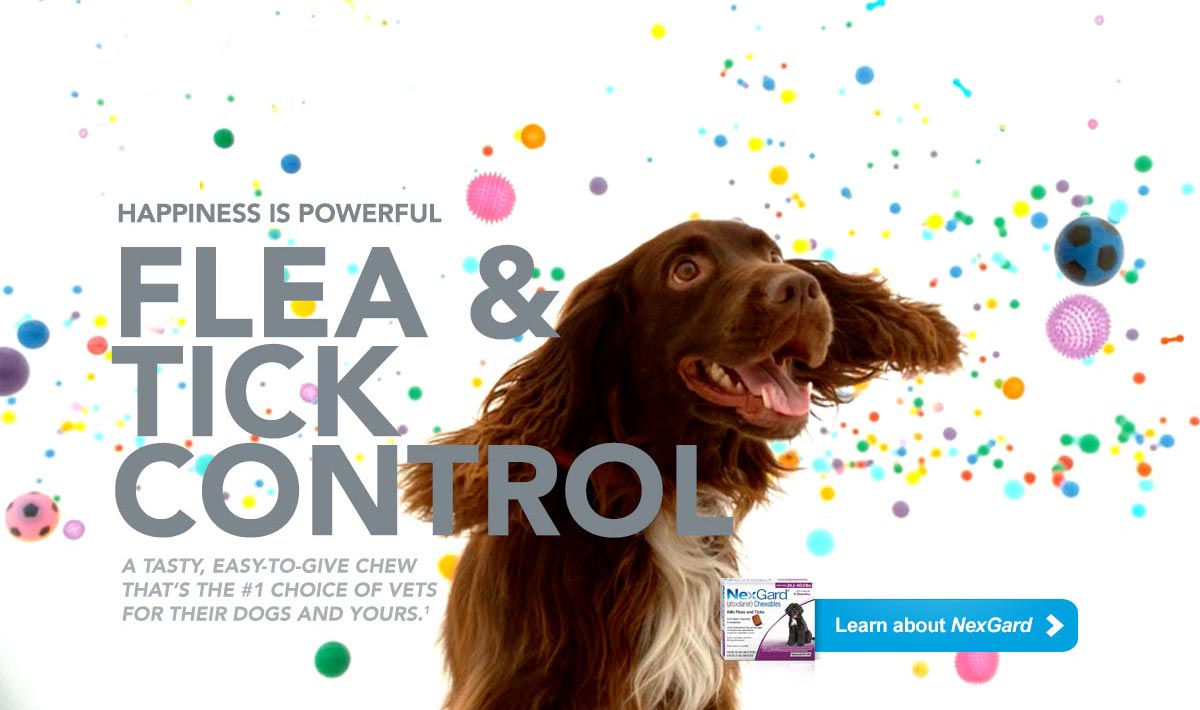Overview
Fleas and ticks are reaching almost epidemic levels here in the southeast, with more than half of all veterinary dermatological appointments having an underlying flea component. Once established, flea infestations in the home can take months to effectively clear, often involving treatment of all pets, the home environment, and lawn. Fleas can also cause health problems for your pet including anemia, skin infections, and the spread of tapeworms.
Although ticks do not usually cause infestations, and are not as commonly found on cats as they are in dogs, they can transmit serious diseases such as Lyme disease, Ehrlichia, and Rocky Mountain Spotted Fever in dogs. But with so many flea and tick control options out on the market right now, how do you know which is right for your pet? In this article we will explore the different options, safety information, and efficacy of most of the available options.
Topical Preventatives
Traditionally, topical flea and tick products have been the most commonly used. These products are applied once a month between your pet’s shoulder blades. Because the topical product uses the oils on your pet’s skin to distribute, bathing is not recommended three days prior to, or after, application. However, not all of these products are created equally. Products like Frontline Plus, and most over the counter generic topical preventatives (Hartz, Adams, Sentry), that have the main ingredient Fipronil, are declining in their efficacy against fleas due to increasing levels of resistance. Preventatives that have been more effective include K9 Advantix II and Frontline Gold due to an additive called Pyrethrin, which acts as a repellent for fleas and ticks. It is very important to note that these products are for dogs only, as Pyrethrin is extremely TOXIC TO CATS. Cats should not have any contact with a treated dog for at least 48 hours. There are also combination topical preventatives for cats including Revolution and Advantage Multi, which protect against heartworm, intestinal worms, fleas, and ear mites.
Collar Preventatives
There are a multitude of collars available, but many of them have proven to be ineffective, with the exception of the Seresto Collar. This is a collar that is made for both cats and dogs that has been highly effective against fleas and ticks for up to eight months. This collar is left in place all the time, without removing for bathing or swimming.
Oral Preventatives
The amount and diversity of oral products has been increasing tremendously over the past few years in response to an increase in demand. For dogs, the most common products are prescription Nexgard, Simparica, and Bravecto. These three products have proven to be highly effective for the prevention of fleas and ticks in dogs, and have a high safety margin, with little reported side effects. Nexgard and Simparica are monthly chewable tablets, while Bravecto is effective for 3 months per dose. There are also combination oral preventatives for dogs, including Sentinel and Trifexis, which protect against fleas, some intestinal worms, and heartworm disease. Since these products do not protect against ticks, we do not recommend them for dogs that spend a significant amount of time outside or in woodsy locations due to the high risks of ticks in the area. There is only one oral option for cats called Comfortis, which is effective against fleas only for one month.
Conclusion
At Southpoint Animal Hospital, we are always happy to help you find the right product for you and your pet. Please feel free to contact us if you have any questions or concerns about flea and tick prevention or plan to discuss options with us at your next wellness exam.





